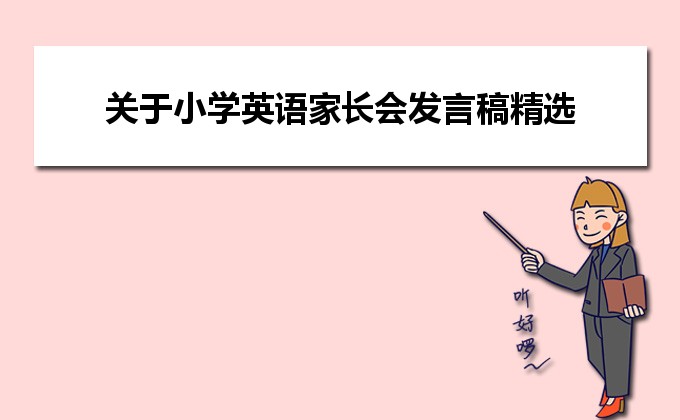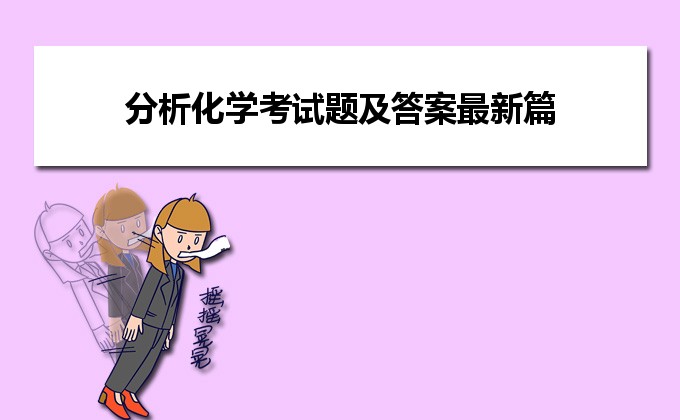art I Writing (30 minutes)
Directions: For this part, you are allowed 30 minutes to write an advertisement on your campuswebsite to sell a you used at college. Youradvertisement may include its brand, specifications/features, condition and price, and yourcontact information. You should write at least 120 words but no more than 180 words.
________________________________________________________________________
________________________________________________________________________
________________________________________________________________________
Part II Listening ComPhension (30 minutes)
Section A News Report
Directions: In this section, you will hear threenews reports。 At the end of each news report, you will hear two or three questions。 Both thenews report and the questions will be spoken only once。 After you hear a question, you mustchoose the best answer from the four choices marked A), B), C) and D)。 Then mark thecorresponding letter on Answer Sheet 1 with a single line through the centre。
Questions 1 and 2 are based on the news report you have just heard.
1. A) The majority of drivers Pfer to drive and park themselves.
B) Human drivers become easily distracted or tired while driving.
C) Most drivers feel uncertain about the safety of self-driving cars.
D) Most drivers have test driven cars with automatic braking features.
2. A) Their drivers would feel safe after getting used to the automatic devices.
B) They would be unpopular with drivers who only trust their own skills.
C) Their increased comfort levels have boosted their sales.
D) They are not actually as safe as automakers advertise.
Questions 3 and 4 are based on the news report you have just heard.
3. A) Thefts of snowmobile dogs in Alaska.
B) A series of injuries to snowmobile drivers.
C) Attacks on some Iditarod Race competitors.
D) A serious accident in the Alaska sports event.
4. A) He stayed behind to look after his injured dogs.
B) He has won the Alaska Iditarod Race four times.
C) He received a minor injury in the Iditarod Race.
D) He has quit the competition in Alaska for good.
Questions 5 to 7 are based on the news report you have just heard.
5. A) It sank into the sea due to overloading.
B) It ran into Nicaragua's Big Corn Island.
C) It disappeared between two large islands.
D) It turned over because of strong winds.
6. A) 13.
B) 25.
C) 30.
D) 32.
7. A) He has helped with the rescue effort.
B) He is being investigated by the police.
C) He was drowned with the passengers.
D) He is among those people missing.
Section B Conversation
Directions: In this section, you will hear two long conversations。 At the end of eachconversations you will hear four questions。 Both the conversations and the question-s will bespoken only once。 After you hear a question。 You must choose the best answer from the fourchoices marked A),B),C)and D)。 Then mark the corresponding letter on Answer Sheet 1 with a single line through the centre.
Questions 8 to 11 are based on the conversation you have just heard.
8. A) At a shopping centre.
B) At a community college.
C) At an accountancy firm.
D) At an IT company.
9. A) Helping out with data input.
B) Arranging interviews.
C) Sorting application forms.
D) Making phone calls.
10. A) He enjoys using computers.
B) He needs the money badly.
C) He wants to work in the city centre.
D) He has relevant working experience.
11. A) Purchase some business suits.
B) Learn some computer language.
C) Improve his programming skills.
D) Review some accountancy terms.
Questions 12 to 15 are based on the conversation you have just heard.
12. A) They are keen on high technology.
B) They are poor at technology skills.
C) They often listen to National Public Radio.
D) They feel superior in science and technology.
13. A) Japanese.
B) Germans.
C) Poles.
D) Americans.
14. A) Emailing.
B) Texting.
C) Science.
D) Literacy.
15. A) It is undergoing a drastic reform.
B) It lays emphasis on creative thinking.
C) It has much room for improvement.
D) It prioritizes training of practical skills.
Section C Passage
Directions: In this section, you will hear three passages。 At the end of each passage, youwill hear three or four questions。 Both the passage and the questions will be spoken onlyonce。 After you hear a question, you must choose the best answer from the four choicesmarked A),B),C)and D)。Then mark the corresponding letter on Answer Sheet 1 with asingle line through the centre.
Questions 16 to 18 are based on the passage you have just heard.
16. A) They have small roots.
B) They grow white flowers.
C) They taste like apples.
D) They come from Central Africa.
17. A) They turned from white to purple in color.
B) They became popular on the world market.
C) They became an important food for humans.
D) They began to look like modern-day carrots.
18. A) They were found quite nutritious.
B) There were serious food shortages.
C) People discovered their medicinal value.
D) Farm machines helped lower their prices.
Questions 19 to 21 are based on the passage you have just heard.
19. A) She could her family any time she liked.
B) She could call up her family whenever she liked
C) She could locate her friends wherever they were.
D) She could download as many pictures as she liked.
20. A) She liked to inform her friends about her success.
B) She enjoyed reading her friends' status updates.
C) She felt quite popular among them.
D) She felt she was a teenager again.
21. A) She could barely respond to all her 500 Facebook friends.
B) She spent more time updating her friends than her family.
C) She could barely balance Facebook updates and her work.
D) She didn't seem to be doing as well as her Facebook friends.
Questions 22 to 25 are based on the passage you have just heard.
22. A) They have strong muscles.
B) They live a longer life than horses.
C) They eat much less in winter.
D) They can work longer than donkeys.
23. A) It was a pet of a Spanish king.
B) It was bought by George Washington.
C) It was brought over from Spain.
D) It was donated by a U.S. Ambassador.
24. A) They met and exchanged ideas on animal breeding.
B) They participated in a mule-driving competition.
C) They showed and traded animals in the market.
D) They fed mules with the best food they could find.
25. A) The wider use of horses.
B) The arrival of tractors.
C) A shrinking animal trade.
D) A growing donkey population.
Part III Reading ComPhension (40 minutes)
Section A
Directions: In this section, there is a passage withten blanks. You are required to select one word foreach blank from a list of choices given in a wordbank following the passage. Read the passage through carefully before making your choices. Each choice in the bank is identified by a letter. Please mark the corresponding letter onAnswer Sheet 2 with a single line through the centre. You may not use any of the words in thebank more than once.
As if you needed another reason to hate the gym, it now turns out that exercise can exhaustnot only your muscles, but also your eyes. Fear not, however, for coffee can stimulate themagain. During __26__ exercise, our muscles tire as they run out of fuel and build up wasteproducts. Muscle performance can also be affected by a __27__ called "central fatigue," inwhich an imbalance in the body's chemical messengers Pvents the central nervous systemfrom directing muscle movements __28__. It was not known, however, whether centralfatigue might also affect motor systems not directly __29__ in the exercise itself, such asthose that move the eyes. To find out, researchers gave 11 volunteer cyclists a carbohydrate(碳水化合物的)__30__ either with a moderate dose of caffeine (咖啡因),which is knownto stimulate the central nervous system, or as a placebo (安慰剂)without, during 3 hours of__31__. After exercising, the scientists tested the cyclists with eye-tracking cameras to seehow well their brains could still __32__ their visual system. The team found that exercisereduced the speed of rapid eye movements by about 8%, __33__ their ability to capture newvisual information. The caffeine, the equivalent of two strong cups of coffee, was __34__ toreverse this effect, with some cyclists even displaying __35__ eye movement speeds. So itmight be a good idea to get someone else to drive you home after that marathon.
A) cautiously B) commit C) control D) cycling E) effectively F) increased G) involved H) limited I) phenomenon J) Pventing K) sensitive L) slowing M) solution N) sufficient O) vigorous
Section B
Directions: In this section, you are going to read a passage with ten statements attached to it. Each statement contains information given in one of the paragraphs Identify the paragraphfrom which the information is derived. You may choose a paragraph more than once. Eachparagraph is marked with a letter. Answer the questions by marking the corresponding letter onAnswer Sheet 2.
Team spirit
A)Teams have become the basic building blocks of organisations. Recruitment advertisementsroutinely call for "team players". Business schools grade their students in part on theirperformance in group projects. Office managers knock down walls to encourage teambuilding. Teams are as old as civilisation, of course: even Jesus had 12 co-workers. But a newreport by Deloitte, "Global Human Capital Trends",based on a survey of more than 7,000 executives in over 130 countries, suggests that the fashion for teamwork has reached a newhigh. Almost half of those surveyed said their companies were either in the middle ofrestructuring or about to embark on (开始)it; and for the most part, restructuring meantputting more emphasis on teams.
B)Companies are abandoning conventional functional departments and organisingemployees into cross- disciplinary teams that focus on particular products, problems orcustomers. These teams are gaining more power to run their own affairs. They are alsospending more time working with each other rather than reporting upwards. Deloitte arguesthat a new organisational form is on the rise: a network of teams is replacing theconventional hierarchy (等级体制).
C)The fashion for teams is driven by a sense that the old way of organising people is too rigidfor both the modern marketplace and the expectations of employees. Technological innovationplaces greater value on agility(灵活性). John Chambers, chairman of Cisco Systems Inc., aworldwide leader in electronics products, says that "we compete against market transitions(过渡), not competitors. Product transitions used to take five or seven years; now they take oneor two. " Digital technology also makes it easier for people to co-ordinate their activities withoutresorting to hierarchy. The " millennials" (千禧一代)who will soon make up half the workforcein rich countries were raised from nursery school onwards to work in groups.
D)The fashion for teams is also sPading from the usual corporate suspects (such as GE andIBM) to some more unusual ones. The Cleveland Clinic, a hospital operator, has reorganised itsmedical staff into teams to focus on particular treatment areas; consultants, nurses andothers collaborate closely instead of being separated by speciality (专业)and rank. The USArmy has gone the same way. In his book, Team of Teams, General Stanley McChrystaldescribes how the army's hierarchical structure hindered its operations during the early stagesof the Iraq war. His solution was to learn something from the rebels it was fighting: decentralising authority to self-organising teams.
E)A good rule of thumb is that as soon as generals and hospital administrators jump on amanagement bandwagon (追随一种管理潮流), it is time to ask questions. Leigh Thompson ofKellogg School of Management in Illinois warns that, "Teams are not always the answer?teamsmay provide insight, creativity and knowledge in a way that a person working independentlycannot; but teamwork may also lead to confusion, delay and poor decision-making. " Thelate Richard Hackman of Harvard University once argued, "I have no question that when youhave a team, the possibility exists that it will generate magic, producing somethingextraordinary ... But don't count on it. "
F)Hackman (who died in 2013) noted that teams are hindered by problems of co-ordinationand motivation that chip away at the benefits of collaboration. High-flyers (能干的人)who areforced to work in teams may be undervalued and free-riders empowered. Group-think may beunavoidable. In a study of 120 teams of senior executives, he discovered that less than 10% of their supposed members agreed on who exactly was on the team. If it is hard enough todefine a team's membership, agreeing on its purpose is harder still.
G)Profound changes in the workforce are making teams trickier to manage. Teams work best iftheir members have a strong common culture. This is hard to achieve when, as is now thecase in many big firms, a large proportion of staff are temporary contractors. Teamworkimproves with time: America's National Transportation Safety Board found that 73% of theincidents in its civil-aviation database occurred on a crew's first day of flying together. However, as Amy Edmondson of Harvard points out, organisations increasingly use "team" as a verbrather than a noun: they form teams for specific purposes and then quickly disband them.
H)The least that can be concluded from this research is that companies need to think harderabout managing teams. They need to rid their minds of sentimentalism(感情用事):the mostsuccessful teams have leaders who are able to set an overall direction and take immediateaction. They need to keep teams small and focused: giving in to Pssure to be more"inclusive" is a guarantee of dysfunction. Jeff Bezos, Amazon's boss, says that "If I see morethan two pizzas for lunch, the team is too big." They need to immunise teams against group-think: Hackman argued that the best ones contain "deviant" (离经叛道者)who are willing todo something that may be upsetting to others.
I)A new study of 12,000 workers in 17 countries by Steelcase, a furniture-maker which alsodoes consulting, finds that the best way to ensure employees are "engaged" is to give themmore control over where and how they do their work?which may mean liberating them fromhaving to do everything in collaboration with others.
J)However, organisations need to learn something bigger than how to manage teams better: they need to be in the habit of asking themselves whether teams are the best tools for the job. Team-building skills are in short supply: Deloitte reports that only 12% of the executives theycontacted feel they understand the way people work together in networks and only 21% feelconfident in their ability to build cross-functional teams. Loosely managed teams can becomehotbeds of distraction?employees routinely complain that they can't get their work donebecause they are forced to spend too much time in meetings or compelled to work in noisyoffices. Even in the age of open-plan offices and social networks some work is best left to theinpidual.
36.Successful team leaders know exactly where the team should go and are able to takeprompt action.
37.Decentralisation of authority was also found to be more effective in military operations.
38.In many companies, the conventional form of organisation is giving way to a network ofteams.
39.Members of poorly managed teams are easily distracted from their work.
40.Teamwork is most effective when team members share the same culture.
41.According to a report by Deloitte, teamwork is becoming increasingly popular amongcompanies.
42.Some team members find it hard to agree on questions like membership and the team'spurpose.
43.Some scholars think teamwork may not always be reliable, despite its potential to workwonders.
44.To ensure employees' commitment, it is advisable to give them more flexibility as towhere and how they work.
45.Product transitions take much less time now than in the past.
Section C
Directions: In this section, you will hear a passage three times. When the passage is read forthe first time,you should listen carefully for its general idea.When the passage is read for thesecond time,you are required to fill in the blanks with the exact words you have just heard. Finally,when the passage is read for the third time,you should check what you have written.
Passage OneQuestions 46 to 50 are based on the following passage.
Shoppers in the UK are spending less money on toilet paper to save money, research hasshown.
Penny-pinching UK consumers choose cheaper products from discounters such as Aldi and Lidlrather than luxury alternatives.
This has wiped 6% off the value of the soft tissue paper market in the UK. It has shrunk from1.19 billion pounds in 2011 to 1.12 billion pounds in 2015, according to a new report frommarket research company Mintel. Furthermore, the future of the market looks far from rosy, with sales expected to fall further to 1.11 billion pounds in 2016.
In the last year alone, despite an increase in the UK population and a subsequent rise in thenumber of households, sales of toilet paper fell by 2%, with the average household reducingtheir toilet roll spending from 43 pounds in 2014 to 41 pounds in 2015.
Overall, almost three in five people say they try to limit their usage of paper?including facialtissue and kitchen roll?to save money. "Strength, softness and thickness remain the leadingindicators of toilet paper quality, with just a small proportion of consumers Pferring moreluxurious alternatives, such as those with flower patterns or perfume," said Mintel analystJack Duckett. "These extra features are deemed unnecessary by the majority of shoppers, which probably reflects how these types of products are typically more expensive than regulartoilet paper, even when on special offer."
While consumers are spending less on toilet paper, they remain fussy?in theory at least?whenit comes to paper quality. Top of Britons' toilet paper wish list is softness (57%) followed bystrength (45%) and thickness (36%).
One in 10 buyers rank toilet rolls made from recycled paper among their top considerations, highlighting how overall the environment is much less of a consideration for shoppers thanproduct quality. In a challenge for manufacturers, 81% of paper product users said theywould consider buying recycled toilet tissue if it were comparable in quality to standardpaper.
46. The market sales of toilet paper have decreased because ______.
A. Britons have cut their spending on it.
B. its prices have gone up over the years.
C. its quality has seen marked improvement.
D. Britons have developed the habit of saving.
47. What does the author think of the future of the tissue paper market in the UK?
A. It will expand in time.
B. It will remain gloomy.
C. It will experience ups and downs.
D. It will recover as population grows.
48. What does Jack Duckett say about toilet paper?
A. Special offers would promote its sales.
B. Consumers are loyal to certain brands.
C. Luxurious features add much to the price.
D. Consumers have a variety to choose from.
49. What do we learn about Britons concerning toilet paper?
A. They are particular about the quality of toilet paper.
B. They emphasize the strength of toilet paper the most.
C. They Pfer cheap toilet paper to recycled toilet paper.
D. They reject using toilet paper with unnecessary features.
50. What can we infer from the last paragraph?
A. More and more Britons buy recycled toilet paper to protect the environment.
B. Toilet paper manufacturers are facing a great challenge in promoting its sales.
C. Toilet paper manufacturers compete with one another to improve product quality.
D. Environmental protection is not much of a concern when Britons buy toilet paper.
Passage Two
Questions 51 to 55 are based on the following passage.
"One of the reasons I find this topic very interesting is because my mom was a smoker when Iwas younger," says Lindson-Hawley, who studies tobacco and health at the University ofOxford.
By studying about 700 adult smokers, she found out that her mom quit the right way?bystopping abruptly and completely.
In her study, participants were randomly (随机地)assigned to two groups. One had to quitabruptly on a given day, going from about a pack a day to zero. The other cut down graduallyover the course of two weeks. People in both groups used nicotine (尼古丁)patches beforethey quit, in addition to a second form of nicotine replacement, like gum or spray. They alsohad talk therapy with a nurse before and after quit day.
Six months out, more people who had quit abruptly had stuck with it?more than one-fifth ofthem, compared to about one-seventh in the other group. Although these numbers appear low, it is much higher than if people try without support.
And the quit rates were particularly convincing given that before the study started, most ofthe people had said they'd rather cut down gradually before quitting. "If you're training for amarathon, you wouldn't expect to turn up and just be able to run it. And I think people see thatfor smoking as well. They think, 'Well, if I gradually reduce, it's like practice,'" says Lindson-Hawley. But that wasn't the case. Instead of giving people practice, the gradual reductionlikely gave them cravings (瘾)and withdrawal symptoms before they even reached quit day, which could be why fewer people in that group actually made it to that Point. "Regardless ofyour stated Pference, if you're ready to quit, quitting abruptly is more effective," says Dr. Gabriela Ferreira. "When you can quote a specific number like a fifth of the patients were ableto quit, that's compelling. It gives them the encouragement, I think, to really go for it," Ferreira says.
People rarely manage to quit the first time they try. But at least, she says, they can maximizethe odds of success.
51. What does Lindson-Hawley say about her mother?
A. She quit smoking with her daughter's help.
B. She succeeded in quitting smoking abruptly.
C. She was also a researcher of tobacco and health.
D. She studied the smoking patterns of adult smokers.
52. What kind of support did smokers receive to quit smoking in Lindson-Hawley's study?
A. They were given physical training.
B. They were looked after by physicians.
C. They were encouraged by psychologists.
D. They were offered nicotine replacements.
53. How does Dr. Gabriela Ferreira view the result of Lindson-Hawley's experiment?
A. It is idealized.
B. It is unexpected.
C. It is encouraging.
D. It is misleading.
54. The idea of "a marathon" (Line 2,Para. 5) illustrates the popular belief that quittingsmoking _____.
A. is something few can accomplish
B. needs some practice first
C. requires a lot of patience
D. is a challenge at the beginning
55. What happens when people try to quit smoking gradually?
A. They find it even more difficult.
B. They are simply unable to make it.
C. They show fewer withdrawal symptoms.
D. They feel much less pain in the process.
Part Ⅳ Translation (30 minutes)
Directions: For this part, you are allowed 30 minutes to translate a passage from Chinese into English. You should write your answer on Answer Sheet 2.
长江是亚洲最长、世界上第三长的河流。长江流经多种不同的生态系统,是诸多濒危物种的栖息地,灌溉了中国五分之一的土地。长江流域(river basin)居住着中国三分之一的人口。长江在中国历史、文化和经济上起着很大的作用。长江三角洲(delta)产出多大20%的中国国民生产总值。几千年来,长江一直被用于供水、运输和工业生产。长江上还坐落着世界最大的水电站。
参考答案:
Part Ⅰ Writing
Sale Items?English Course Books
Some English course books are waiting for their newowners!
This is a collection of College English Books ranging from book 1 to book 4 with CD attachedbehind. Many useful articles, either interesting or thought provoking, are incorporated in thebooks, followed by some practical and persified exercises. Therefore, it is of great use to helpyou pass CET 4 and can also be a good choice of self study aside from being textbooks. Considering being used once, frankly speaking, they are not brand new, but with somenecessary notes on the margins. Therefore, they are not charged high, only 10 yuan for eachbook. There will be a discount and a surprise gift offered to you if you buy them altogether.
English plays a critically important role in our college study as well as in society. I hope youwon't miss this good chance to buy some useful books with a low price. If you are interested, please call me at 12345678900.
Part Ⅱ Listening ComPhension
1. C.Most drivers feel uncertain about the safety of self-driving cars.
2. A.Their drivers would feel safe after getting used to the automatic devices.
3. C.Attacks on some Iditarod race competitors.
4. B.He has won the Alaska Iditarod Race four times.
5. D.It turned over because of strong winds.
6. D.32.
7. B.He is being investigated by the police.
8. C.At an accountancy firm.
9. A.Helping out with data input.
10. B.He needs the money badly.
11. D.Review some accountancy terms.
12. B.They are poor at technology skills.
13. A.Japanese.
14. D.Literacy.
15. C.It has much room for improvement.
16. A.They have small roots.
17. D.They began to look like modern-day carrots.
18. B.There were serious food shortages.
19. A.She could her family any time she liked.
20. B.She enjoyed reading her friends' status updates.
21. D.She didn't seem to be doing as well as her Facebook friends.
22. A.They have strong muscles.
23. C.It was brought over from Spain.
24. C.They showed and traded animals in the market.
25. B.The arrival of tractors.
Part III Reading ComPhension
26-35:OIEGM DCJNF
36-45:HDBJG AFEIC
46-55:ABCAD BDCBA
Part IV Translation
The Yangtze River is the longest in Asia and the third longest in the world. The river, whichflows through varied ecosystems along its passage, offers habitats for many endangeredspecies and provides irrigation for 1/5 of China's land. The Yangtze River basin is home to 1/3 of China's population. The river plays a very important role in China historically, culturally andeconomically. The Yangtze River Delta contributes up to 20% of China's GDP. For millennia, theYangtze River has been used for water supply, shipment and industrial activities. The world'slargest hydropower station is also built on the river.













